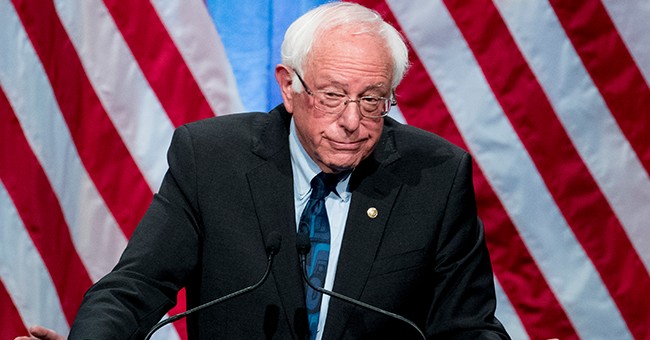
Single payer health care in the United Kingdom now has 6.6 million patients on waiting lists.
Flash!
We interrupt your inconveniently scheduled recession—aggravated by crazy congressional spending and absurd tax hikes—to bring you breaking news from London. Britain’s famed “single-payer” system of national health insurance is in crisis. Again.
According to The Telegraph, one of Britain’s leading newspapers, the total number of patients waiting for medical care has soared to a record 6.6 million British citizens, almost 10 percent of the entire population. The newspaper’s Data Tracker contains a remarkable set of revealing numbers on the Western world’s oldest model of socialized medicine.
Ugly Data
Especially significant is the failure of the government health program to meet its central planning targets for access to care, cancer treatment, and primary care appointments. Here are some examples.
- Waiting Lists: Only 63 percent of British patients are being treated within 18 weeks; the British government’s target was 92 percent.
- Accident and Emergency Care: Only 72 percent of British patients seeking emergency care are seen within four hours.
- Primary Care Appointments: Only 55 percent of British patients are getting “face to face” appointments; pre-pandemic, it was 80 percent.
Since the onset of the COVID-19 pandemic in March of 2020, British waiting lists have increased by 2.4 million; 543,000 British patients have had to wait more than four hours to receive accident and emergency care; 2300 British patients have had to wait more than a month to start cancer treatment; and 407,00 British patients have failed to get MRI examinations or colonoscopies within six weeks.
In short, according to The Telegraph, “The NHS is failing to meet every single one of its key duties of care to patients.”
Mounting Stress
Medical professionals in Britain are under increasing stress. They are paid far less than their counterparts in the United States. Many are demoralized and are working less than full time, thus adding to the increasing strain on British patients.
It is estimated that England’s branch of the NHS has a shortage of 12,000 hospital doctors and an estimated 50,000 nurses and midwives. According to a survey sponsored by the Royal College of General Practitioners, a third of British General Practitioners are considering leaving medical practice within the next five years. Meanwhile, nurses are also complaining about low pay and many may be forced to leave the profession.
In a separate account of the travails of the system, The Telegraph reports that 50,000 people are dying annually because of “poor treatment.” Of the 6.6 million on medical waiting lists, some patients have been waiting “more than two years.”
Among the biggest problems facing the NHS is effective treatment for cancer. Last year, John Butler, a British cancer expert told a select committee of the British Parliament that England’s cancer survival metrics are 10 to 15 years “behind leading nations.”
A Chronic Condition
Britain’s multiple medical crises are more deeply rooted than the problems that surfaced with the NHS response to the COVID-19 pandemic. Laura Donnelly, a Telegraph health editor, and her colleagues write:
“When the pandemic hit Britain in the spring of 2020, it collided with a health service that was already struggling to keep its head above water. Not only were beds thin on the ground and ventilated wards of the type common in Singapore unheard of, but many of the basics such as ventilators, surgical masks, and even plastic aprons were in short supply.
“Moreover, it quickly transpired that the Department of Health and its public arm, then Public Health England, had never planned to stop or even slow a fast-moving pandemic.”
A Reminder
Given the NHS performance, it is worth recalling the promises of America’s “progressive” champions of a single payer national health insurance system for the United States. They insisted, after all, that such a system would be much better prepared to cope with the COVID-19 pandemic than the existing public-private financing and delivery systems that characterize American health care.
That has been the key message of Rep. Pramila Jayapal, D-Wash., and more than half of House Democrats who are cosponsoring a “single payer” House bill.
Their bill would create an American version of national health insurance and would abolish virtually all private and employer health insurance, as well as existing federal health programs, including Medicare, Medicaid, and the popular and successful Federal Employees Health Benefits Program.
Sen. Bernie Sanders, the Vermont Independent and self-described “democratic socialist,” has recently reintroduced a similar “single payer” bill in the Senate, with 14 of his Senate colleagues.
Substantively, Sanders’ latest bill is like earlier versions. Not only would his national insurance program cover everybody, but the senator insists that it would cost less than today’s public–private coverage arrangements: “No more premiums. No more copayments. No more deductibles. No more out-of-pocket expenses. And we’re gonna fund it publicly, and, for the average American, it will be a significant reduction in his or her health care costs.”
Well, not quite.
The unprecedented federal spending required for Sanders’ version of national health insurance would also entail a mammoth increase in federal taxation.
That taxation, as Sanders concedes, would be broad based, and not confined to The Rich. Indeed, according to a detailed Heritage Foundation econometric analysis, such a program would require an additional tax of 21.2 percent on earnings, and 65.5 percent of American households would end up paying more for health care than they do today. The biggest losers would be American households with employer-sponsored health coverage.
But beyond the big dollar cost, it is worth noting that these versions of national health insurance assume “saving” by making major reductions, as much as 40 percent, in reimbursement for doctors, hospitals, and other medical professionals.
American patients would pay an even heavier price in the inevitable delays and denials of care–the waiting lists that are characteristic of a government-run national health insurance system, as evidenced in the continuing experiences of Britain and Canada.
It’s hard to imagine anything more expensive than “free care for all.”
Originally published by The Daily Signal. Republished with permission.
For more Health Care News.









